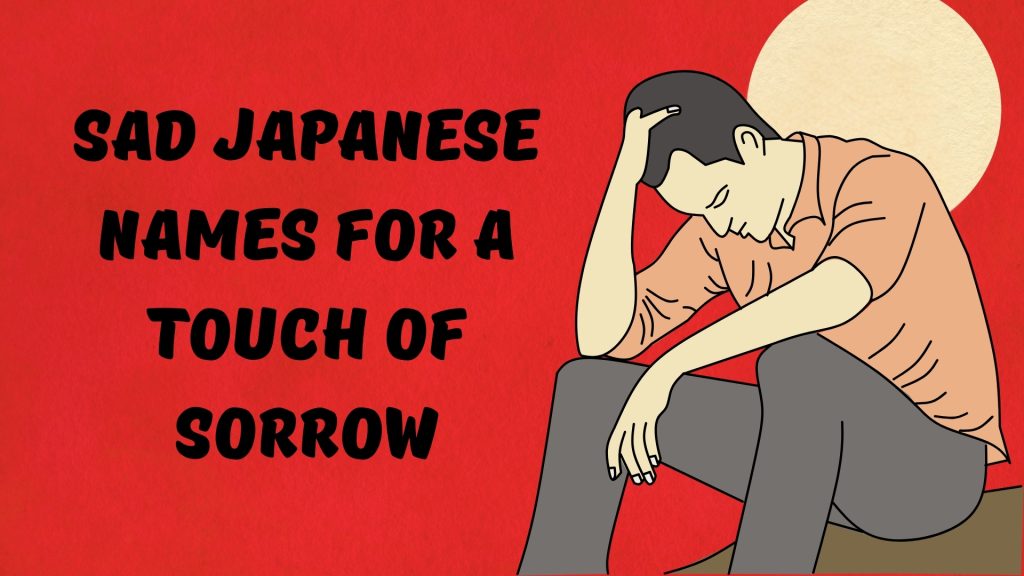In Japanese culture, names carry deep meanings. They reflect personal stories and the wider culture. For example, names like ‘Kanashimi’ which means sadness, and ‘Namida’ which means tear, show the importance of emotions in Japanese society. These names often come from history, literature, or family stories. They remind people of tough times or deep thoughts from the past.
Looking at these names helps us understand how deeply emotions are valued in Japan. It makes you think about how these sad names have shaped people’s lives and the society over time. What can these names tell us about Japan’s history and culture?
Exploring Sadness in Japanese Naming Traditions
Exploring Japanese naming traditions, we find a deep connection to emotions like sadness. Each name, like ‘Kanashimi’ which means pure sorrow, or ‘Namida’, meaning tears, captures a unique feeling.
These names do more than identify someone; they carry personal and shared stories, adding layers to the culture.
Japanese Boy Names That Mean Sadness
In Japanese culture, some boy names deeply reflect themes of sadness. For instance, ‘Kanashimi’ means sorrow, and ‘Namida’ stands for tears. These names really highlight feelings of sadness.
You also have names like ‘Urei,’ which means sorrowful reflection, and ‘Setsuna,’ which means heartache. These names show how deeply emotional pain is woven into naming traditions.
- Kanashiro – Castle of sorrow
- Yuugai – Distant sorrow
- Setsuya – Severe grief
- Higure – Sunset, dusk
- Shuukan – Gloomy sight
- Atsurei – Tears of sorrow
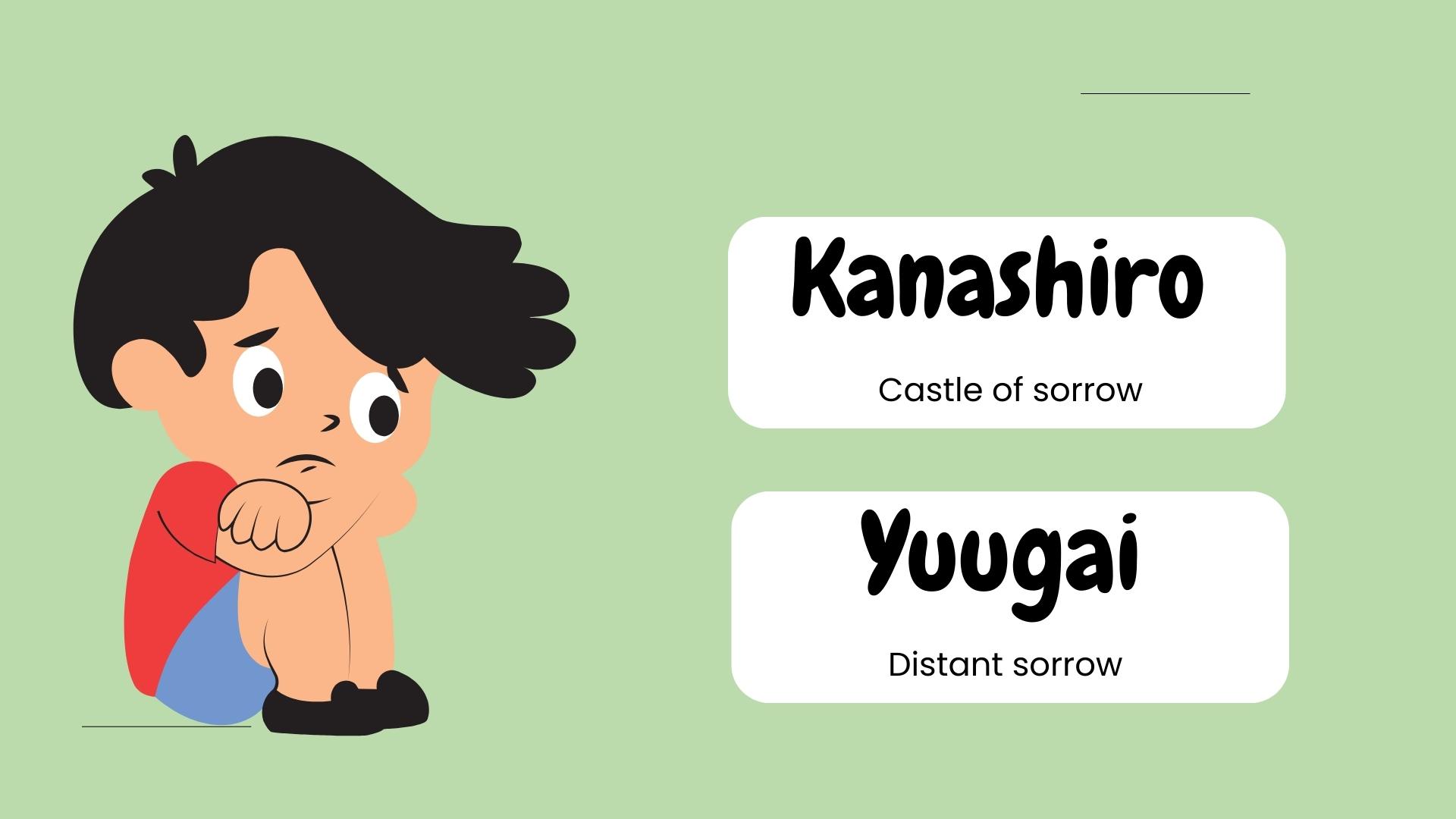
- Nagiharu – Still spring, silent sorrow
- Seikan – Quiet regret
- Haruto – Sorrowful flight
- Souten – Pale sky, empty sadness
- Reijuu – Gentle sorrow
- Fukayuu – Deep grief
- Mujiro – White mist, fading emotions
- Jinsei – Life of dust, fleeting existence
- Yoizuki – Night moon, lonely beauty
- Kanrei – Cold tears of grief
- Rensei – Lotus of sorrow
- Shikou – Gloomy thoughts
- Hazama – A gap between happiness and sorrow
- Aisetsu – Deep lamentation
- Yukishiro – White snow, silent sadness
- Kuroame – Black rain, sorrowful tears
- Hakanai – Fleeting, temporary sadness
- Reiou – Phantom sorrow
- Saburou – Loneliness in stillness
- Naruse – Sound of weeping
- Kyouji – Echoes of sadness
- Usui – Faint sorrow, gentle grief
- Sakui – Regretful memories
- Yugami – Distorted by sadness
- Ranshi – Withering blossom, fading life
- Shunrei – Spring’s sorrow
- Aragai – Struggling against grief
- Hikaze – Cold wind of sorrow
- Shigami – Silent tears
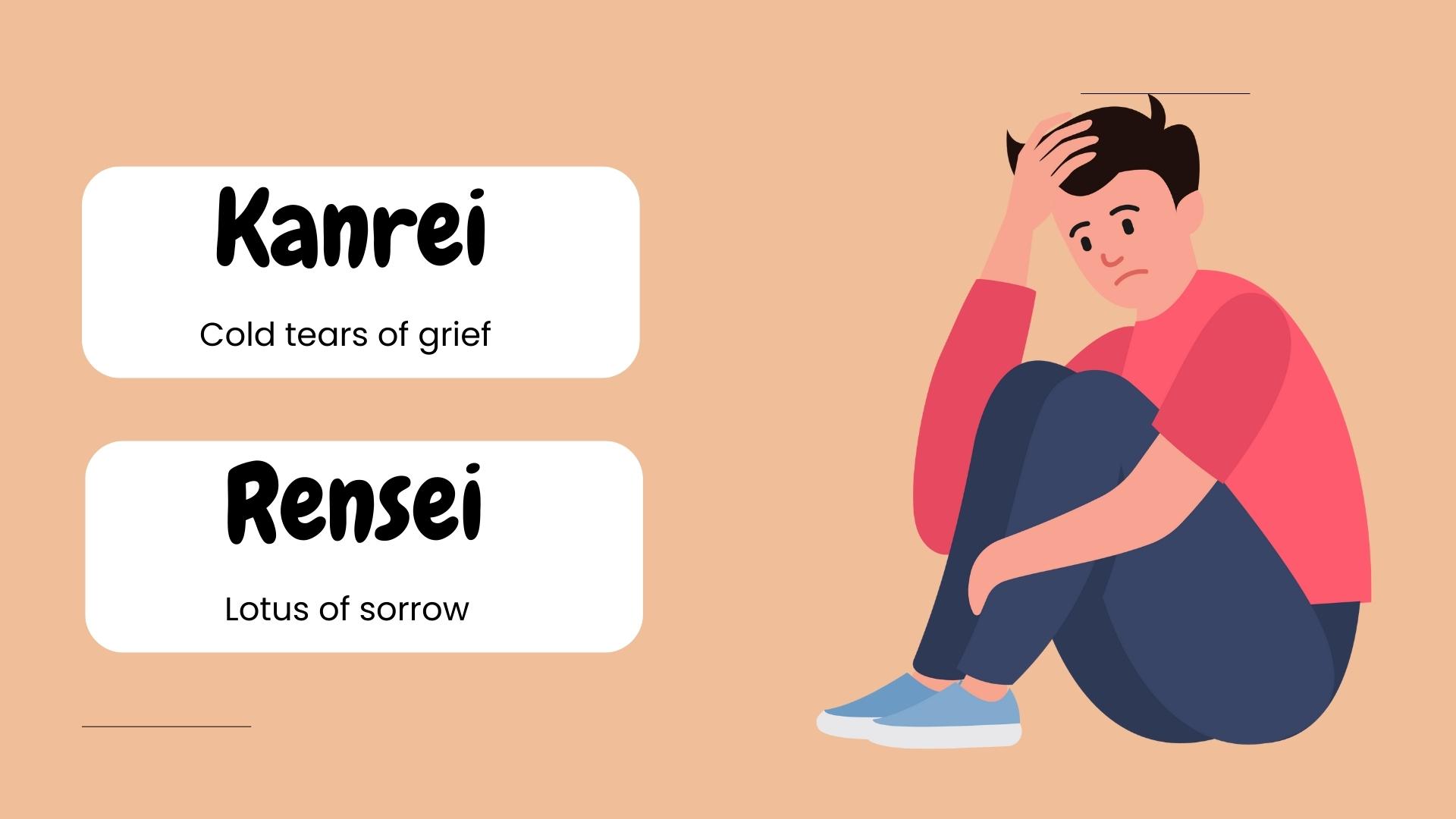
- Renjou – Love lost in sorrow
- Kumokaze – Cloudy wind, storm of emotions
- Touyou – Distant melancholy
- Mizuhaku – Pale water, fading presence
- Saikou – Sorrowful afterglow
- Nozomi – Hope lost in sadness
- Ketsui – Bound by regret
- Rekkai – Distant lament
- Soumu – Mourning heart
- Shinrai – Heart burdened by sadness
- Kagerou – Heat haze, fleeting sorrow
- Tsubasa – Wings of sorrow
- Arai – Washing away grief
- Shousetsu – Little sadness, lingering sorrow
- Enrai – Distant thunder, sorrow approaching
Discover 150+ Japanese Names That Symbolize Fire & Strength!
Japanese Girl Names that Mean Sadness
There are several Japanese girl names that reflect themes of sadness.
‘Namida’ means tears of sorrow.
‘Aika’ is like a sad song.
‘Setsuna’ shows deep yearning or heartache.
‘Urei’ brings a sense of sorrowful reflection, and
‘Kanashimi’ means sorrow itself, really showing the depth of these emotions.
- Kaname – Sorrowful eyes
- Reika – Falling petals
- Kageri – Dimness, shadow of sadness
- Mibuki – A bud that never blooms
- Aisuzu – Mourning bell
- Senzora – Thousand empty skies
- Hazuki – Falling leaves, melancholic August
- Toukai – Winter sorrow
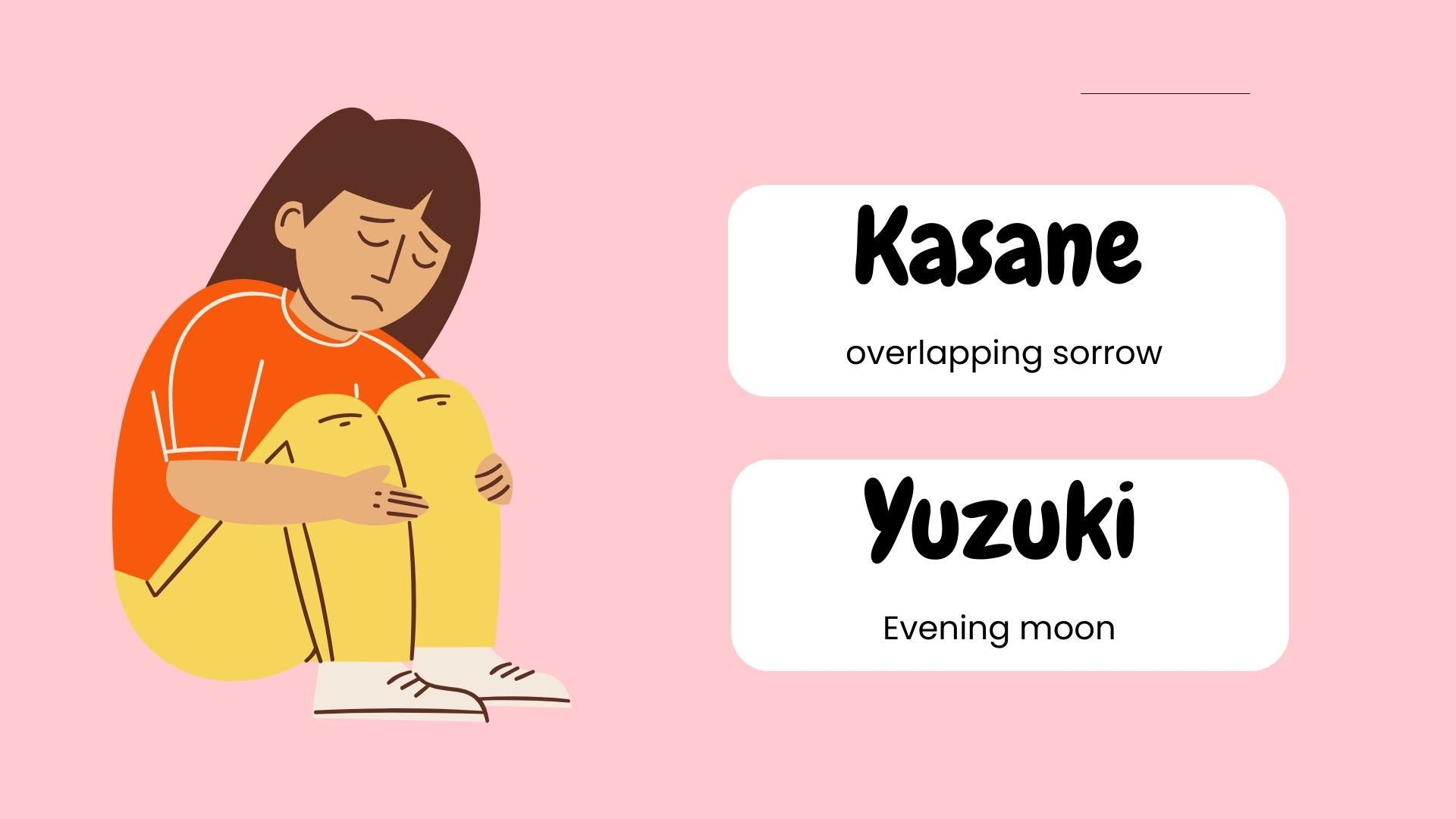
- Shiori – Bookmark of tears
- Namiya – Waves of sadness
- Murei – Misty beauty, soft sorrow
- Urayuki – Snow of sorrow
- Hinagiku – Sad chrysanthemum
- Koine – Echo of lost love
- Kasane – Layered sadness, overlapping sorrow
- Rukia – Flowing grief
- Yuzuki – Evening moon, lonely glow
- Suzume – Sparrow’s cry, faint sadness
- Asuha – Falling leaf, passing moment
- Hiyori – Fading warmth of the sun
- Sayo – Night’s sorrowful beauty
- Meiko – Silent weeping
- Fuyuka – Snowy sorrow
- Ayame – Fading iris, ephemeral sorrow
- Tomoe – Echo of past grief
- Shigure – Autumn drizzle, sorrowful tears
- Kiko – Echo of loneliness
- Miharu – Cold spring, distant warmth
- Aozora – Blue sky, empty longing
- Senka – Thousand lost flowers
- Ririko – Faint sound of sadness
- Kasuka – Weak light, quiet sorrow
- Orie – Weaving grief into time
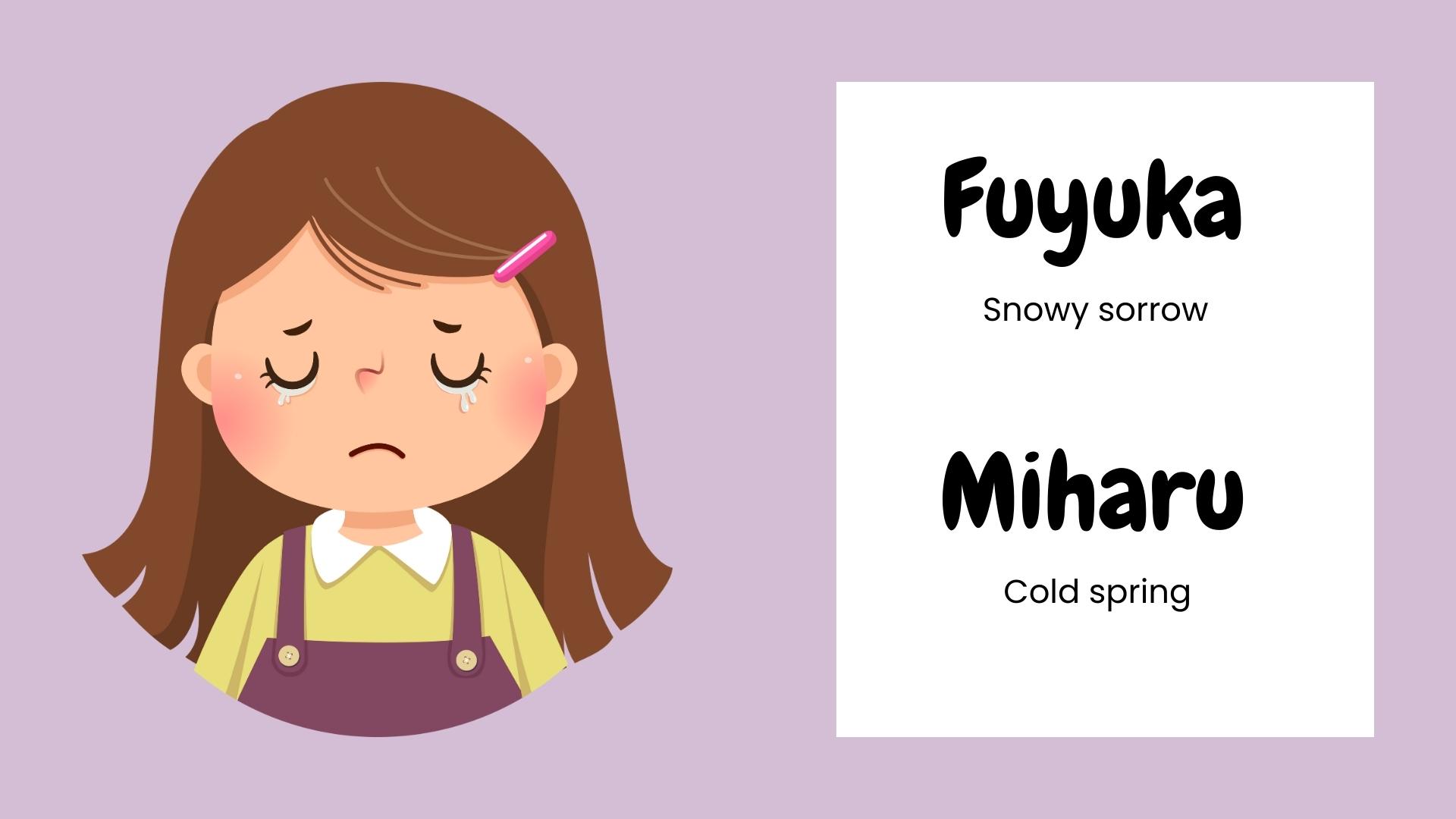
- Sayaka – Clear yet sorrowful
- Rinrei – Frozen sorrow
- Yumeha – Dreaming of lost happiness
- Akane – Dying embers, soft sadness
- Shizuku – Falling tear, single raindrop
- Kiyone – Pure yet unfulfilled
- Yuuhi – Setting sun, vanishing warmth
- Nanoka – Seven sorrows, deep pain
- Suiren – Lonely lotus, trapped in still water
- Hoshimi – Watching stars fade
- Chinatsu – Thousand summers lost
- Midori – Green fading into autumn
- Kyouka – Mirror of grief
- Natsume – Forgotten summer, lost time
- Momoe – Peach blossoms falling in sorrow
- Shuka – Empty autumn wind
- Ouka – Cherry blossom scattering in the win
Discover Stunning Japanese Names with the Meaning of Purple!
Unisex Japanese Names That Mean Sadness
Unisex Japanese names that suggest sadness often touch people deeply across different cultures. Names like ‘Kanashimi’, which means sorrow, and ‘Namida’, which means tears, are powerful. They talk about deep feelings.
‘Urei’ means a kind of sorrowful thinking, and ‘Setsuna’ means heartache. These names express strong feelings of loss and sadness, and they really make people feel something, no matter where they’re from.
- Shuurei – Spirit of sorrow
- Kyourei – Mirror of lost souls
- Hisame – Cold rain, frozen tears
- Aoba – Green leaves, fading summer
- Urei – Scattered grief
- Nozomu – Dreams of longing
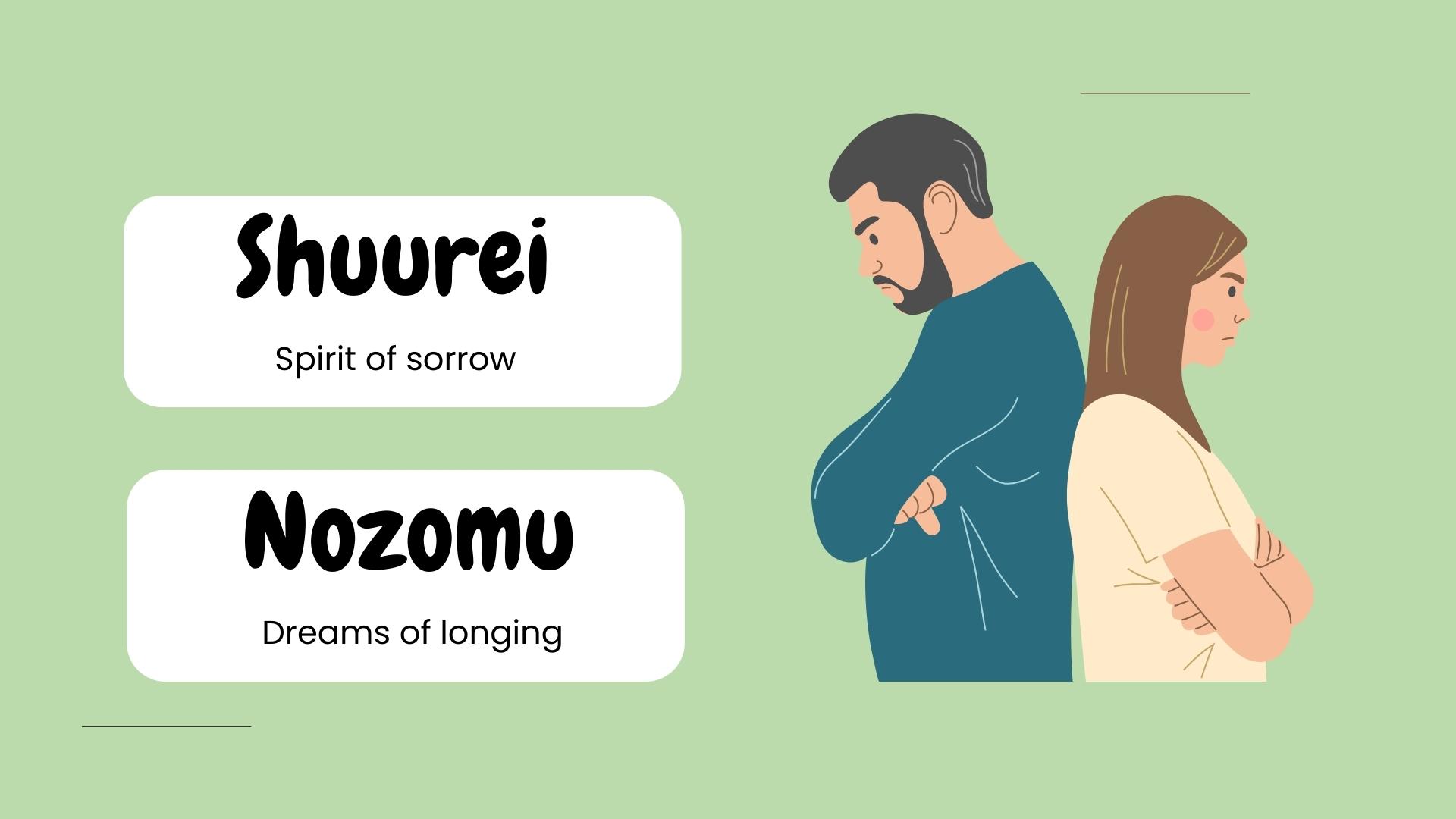
- Souto – Blue echoes, distant sorrow
- Misora – Unfulfilled sky, endless longing
- Rikaze – Winds of sorrow
- Harusame – Spring rain, gentle sorrow
- Shigure – Cold drizzle, fleeting tears
- Kasuka – Faint fragrance, lingering sadness
- Otoha – Sound of wings, silent sorrow
- Reimei – Cold clarity, empty light
- Hakuya – White night, sleepless sorrow
- Yuurei – Wandering spirit
- Hinata – Sunlit sorrow
- Mizuki – Water moon, unreachable beauty
- Shian – Purple darkness, soft sadness
- Tsukishiro – Pale moonlight, wistful sorrow
- Fuyuhana – Winter flower, frozen beauty
- Kohaku – Amber light, fading warmth
- Natsuki – Summer’s end, vanishing happiness
- Touka – Distant light, unreachable warmth
- Ichika – One moment of sorrow
- Sazanami – Gentle waves, endless grief
- Renge – Lotus of sadness
- Arashi – Storm of emotions
- Tsubaki – Camellia fading in the cold
- Kisaragi – Unfulfilled promise
- Satsuki – Fifth moon, longing for the past
- Hozuki – Ghost lantern, silent pain
- Usagi – Rabbit in the moon, distant longing
- Yukari – Fading connection
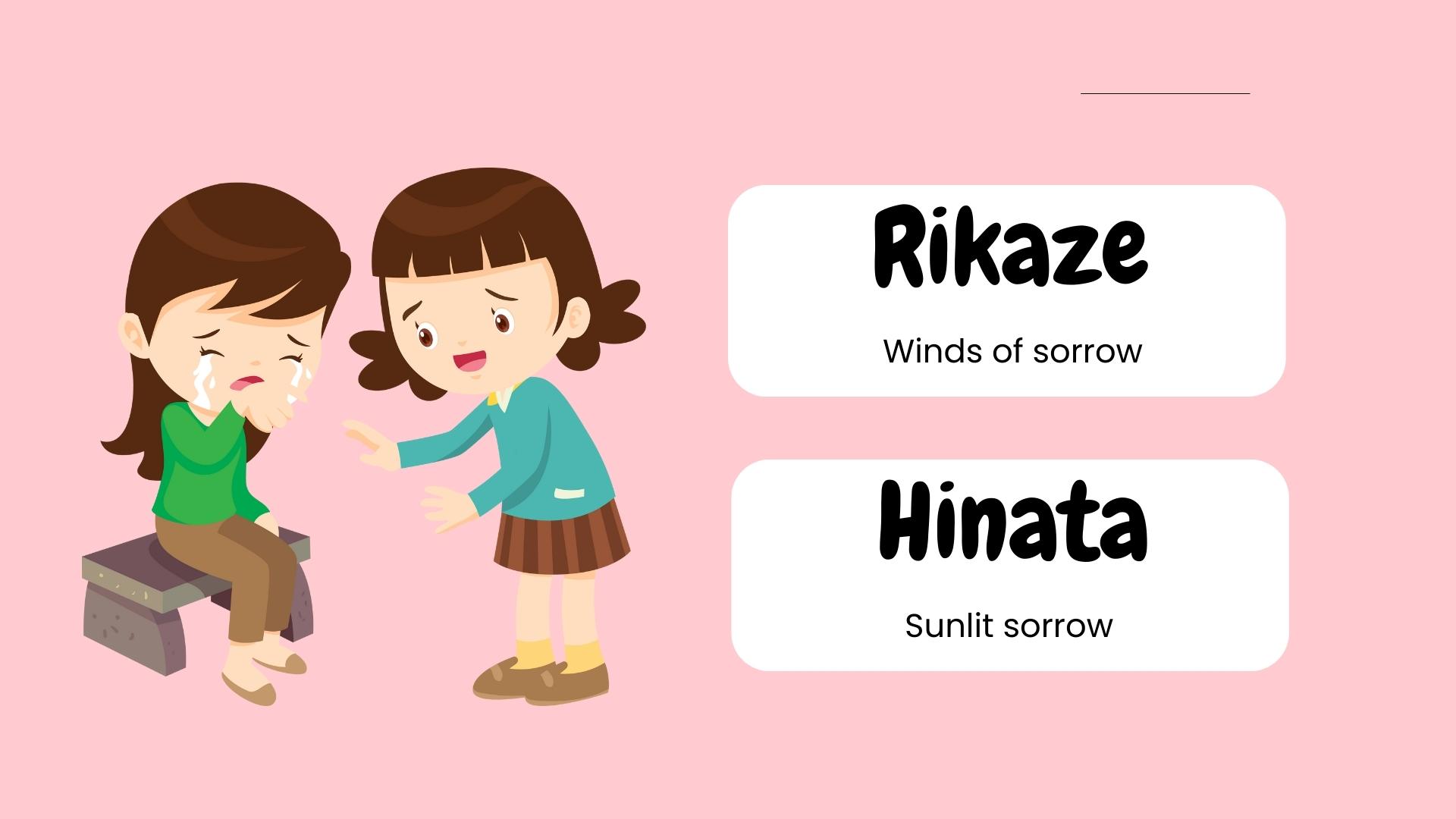
- Senko – Thousand lights, distant sorrow
- Homura – Dying embers, burning grief
- Ayumu – Walking forward despite sorrow
- Sumire – Violet flower, delicate sadness
- Shion – Aster flower, symbol of remembrance
- Yuzuru – Giving away happiness
- Renji – Love that lingers in sorrow
- Fuyuto – Cold season, frozen sorrow
- Nagi – Stillness before the storm
- Mayoi – Lost in melancholy
- Asahi – Morning light, never reaching
- Shinju – Sinking pearl, drowning sadness
- Kizuna – Bonds broken by fate
- Tetsuya – Night of despair
- Kaede – Maple leaves, falling memories
- Ruka – Flowing away like water
Conclusion
To put it simply, looking at sad Japanese names like ‘Kanashimi’ and ‘Namida’ shows us how deeply Japanese culture values human emotions. These names really capture the essence of sadness. They reflect and acknowledge the sadder parts of life.
By using such emotional names, it’s clear how important stories and language are in shaping who we are and how we feel. This really highlights the powerful way language connects with our emotions.
Get Your Daily Dose of Inspiration with Akar Print!
Basmah Ali is a skilled copywriter with a degree from the University of Warwick. She crafts clear, engaging content that connects with readers and gets results. When she’s not writing, she’s likely reading or exploring new ideas in marketing.

